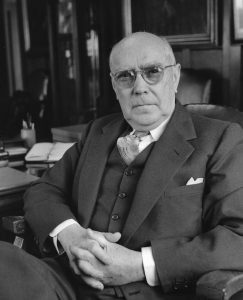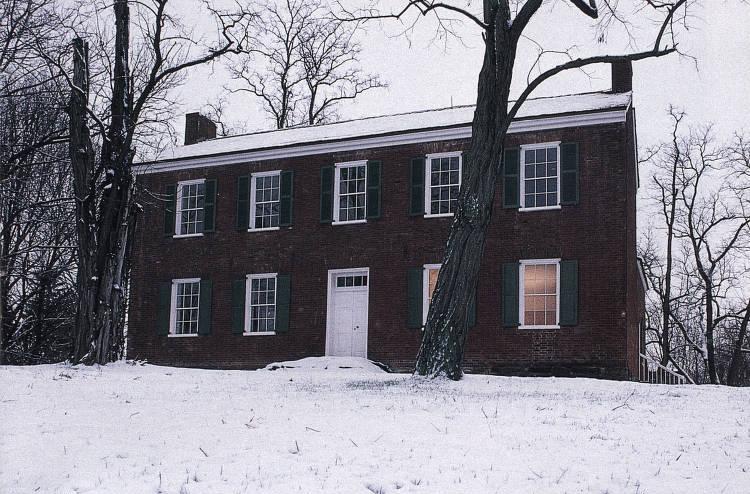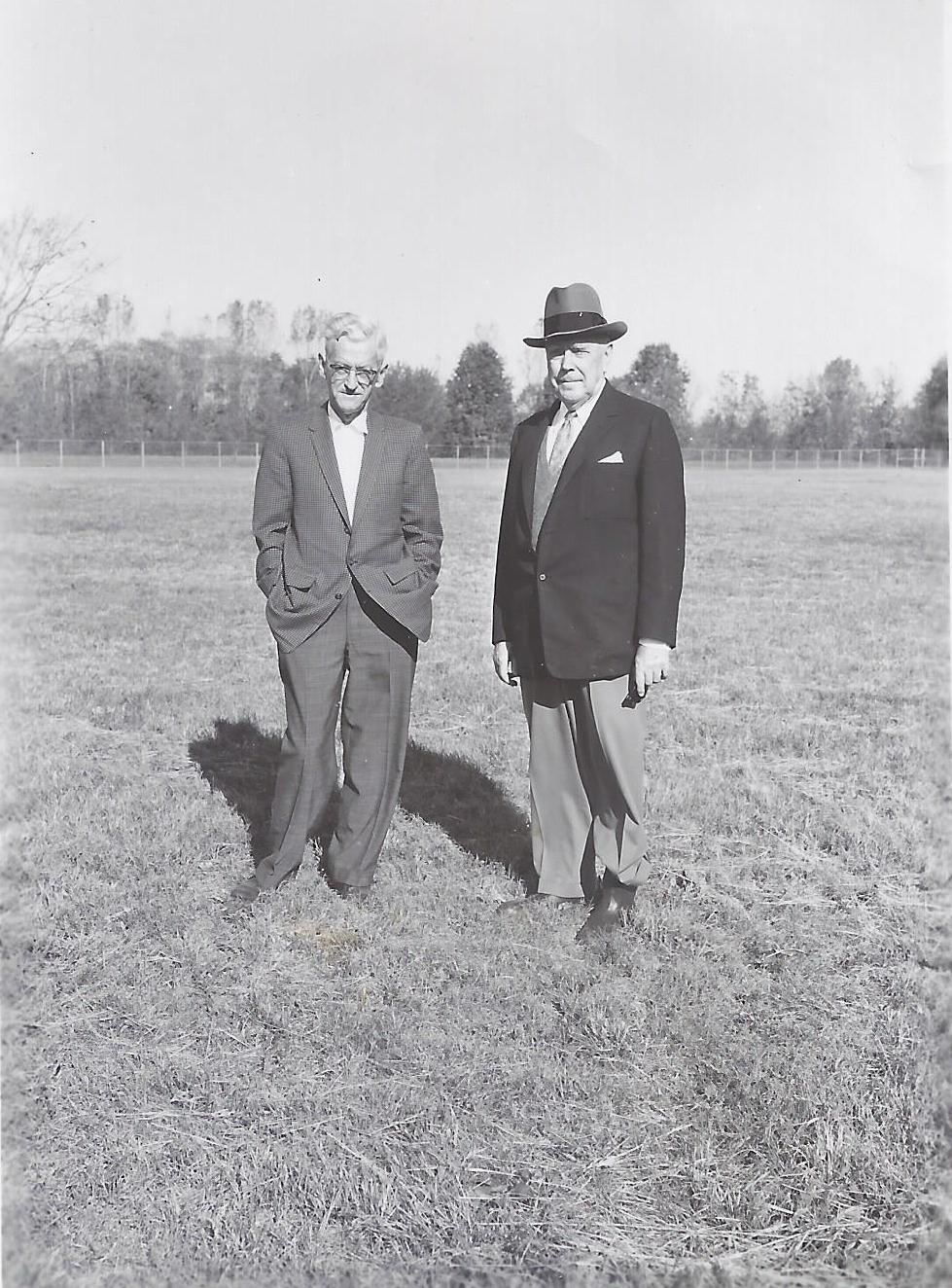
Photo info ...
Credit: Indiana Historical Society View Source
(Apr. 1, 1885-Jan. 24, 1977). Eli Lilly was the son of and Lilly Ridgely Lilly; the grandson of ; and the brother of His marriage in 1907 to Evelyn Fortune produced two sons who died in infancy and a daughter, Evelyn, who died in 1970. This first marriage ended in divorce in 1926. His marriage in 1927 to Ruth Allison Lilly lasted happily until she died in 1973.
Lilly was educated in the Indianapolis public schools. He was a graduate of . Like his father before him, he attended the Philadelphia College of Pharmacy, graduating in 1907. He immediately joined the pharmaceutical company founded by his grandfather and remained associated with the business until his death, serving as president from 1932 to 1948 and then as chairman of the board.
Lilly played a dominant role in the growth and maturation of the company. He successfully applied the techniques of mass production to drug manufacturing, setting up in the 1920s a straight-line production system far more complex than Henry Ford’s auto assembly line.

He and his father J. K. Lilly Sr. led the company into sophisticated research in its own laboratories and into close cooperation with university scientists. In May 1922, he and respected biochemist and director of Lilly research met with John James Rickard Macleod, Frederick Grant Banting, and Charles H. Best, University of Toronto research scientists who discovered insulin, which resulted in an agreement that led to the worldwide distribution of the lifesaving drug. Banting and Macleod won the Nobel Prize for Medicine in 1923.
In the mid-1920s, the company partnered with George H. Whipple, a research scientist at the University of Rochester, and George R. Minot and William P. Murphy, professors at the Harvard Medical School, to produce a liver extract that became the standard treatment for pernicious anemia, connecting Eli Lilly and Company to a second Nobel Prize for Medicine. The three men shared the prize in 1934. These successes anchored the company as an important center of drug research and development. Under Lilly’s direction, the company went on to make history with the large-scale production of penicillin, a wide range of other antibiotics, and the Salk polio vaccine.

In the 1930s and 1940s, Lilly also devoted great attention to employee morale and welfare, making “Lilly’s” one of the most attractive places to work in the city. The American Pharmaceutical Association awarded him the Remington Honor Medal in 1957 for distinguished service to pharmaceutical science.
Among Lilly’s many interests outside the business were the history and archaeology of Indiana. He was president of the from 1933 to 1947 and was thereafter a member of its Executive Committee and Board of Trustees. His book , published in 1937, was a major contribution to the field, as was the report on the Walam Olum, published in 1954.
His direction and financial support preserved the prehistoric Angel Site in southern Indiana and led to the construction of the Glenn A. Black Laboratory of Archaeology at Indiana University, Bloomington. His , published in 1957, is a model church history. Lilly’s attraction to the past led also to his strong support for historic preservation, evident in the development of , support for the restoration of several houses in Indianapolis, and the founding of the .
Lilly’s wealth and humanity led him to become a major philanthropic benefactor. He and his family established the in 1937. He played an active role in focusing the endowment’s support in the areas closest to his own concerns—religion, education, and community development, with special attention to Indianapolis and Indiana.
Immediately following World War II, Lilly began collecting Chinese art and began donating objects to the Herron Art Museum in 1947. In 1960, he presented the entire collection, which spans the Neolithic period, 3000-2500 B.C. to the 19th century, to the institution. The Lilly Collection of Chinese Art, one of the finest and most comprehensive of its kind, formed the core of the Oriental Department of the , Herron’s successor, when it opened in 1970.
Lilly also made large personal contributions to many projects and organizations, usually with the insistence that they be anonymous. Among the Indianapolis institutions that were major beneficiaries of his estate were the Indiana Historical Society, the Historic Landmarks Foundation of Indiana, , , St. Paul’s and Trinity Episcopal churches, Conner Prairie, the Indianapolis Museum of Art, , and the foundations of and . After he met with Mayor in 1972, he also became involved in major revitalization projects in Indianapolis , including and the neighborhood.
Lilly enjoyed sailing at Lake Wawasee, woodworking, and visiting with a small circle of close friends, particularly friends from Indianapolis and those who shared his historical interests. He was modest and unassuming, though he set high standards for himself. He was never actively involved in politics, but he became generally recognized as one of the most powerful men in the city, the consequence not simply of his wealth but also of his intense concern and affection for the place of his birth.

Help improve this entry
Contribute information, offer corrections, suggest images.
You can also recommend new entries related to this topic.